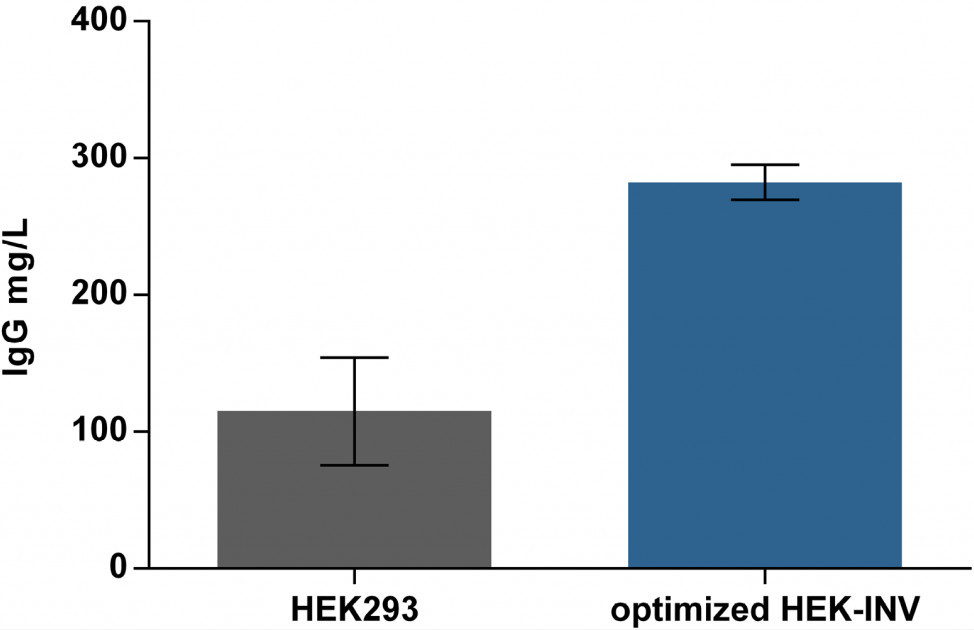HEK-INV for high titer TGE
Several different mammalian cell lines are used for the production of recombinant proteins and antibodies, with CHO cells being the most prominent expression system in biopharmaceutical production. To guarantee high product consistency it is highly desirable to use the same host cell line for early-stage operations and later production. However, the cell-specific productivity of CHO cells in TGE processes is often lower than the productivity of human cells. On the other hand, HEK293 cells are the most widely used human cell lines for expression of recombinant proteins in research and industrial applications. Both HEK and CHO cells are easy to handle and grow well in suspension in CD-ACF (chemically defined and animal component free) culture media. This is very important since actively dividing cells are transfected more efficiently than non-dividing cells as the nuclear envelope breakdown during cell division promotes nuclear transport of DNA.
During recent decades, many HEK293 descendants have been generated by genetic modification, directed evolution and cloning. One of the most popular genetic elements for modification is the EBNA-1 gene in conjunction with the replication origin oriP of the Epstein-Barr Virus which enhances gene expression by episomal replication and maintenance of plasmids, as well as nuclear import by containing a nuclear localization signal (NLS). Similar modifications and improvements can be achieved by using the SV40 large T-antigen of the SV40 virus in conjunction with the replication origin SV40 ori. All in all, HEK293 cells are either available as relatively native cells (such as 293 Freestyle or ATCC CRL-1573) or engineered cells (such as ATCC CRL-11268 or ATCC CRL-10852). Most companies appear to have indeed implemented their “own” HEK cell line. InVivo uses the recently developed HEK-INV cell line for high-titer transient gene expression. To generate this optimized host cell line, we utilized a directed evolution approach. For this purpose, an iterative process of evolution rounds followed by metabolomic phenotype analysis and selection of cells was performed. In detail, we mainly focused on productivity and growth characteristics. This way, the new cell line showed a 3‑fold increase in productivity for human IgG1 in comparison to the parental HEK293 host cell line.

Antibody quantities (7 days post transfection) expressed by HEK293 and proprietary HEK-INV. HEK-INV is an optimized host cell line for TGE processes generated by a directed evolution approach resulting in a 3-fold increase in productivity in comparison to the parental host cell line.
Based on the original CHO cell line generated by Puck in 1957, nowadays various CHO cell lines are used for transient gene expression. These cell lines are mainly derived from four descendants – the CHO-K1 by Kao and Puck (1968), the dhfr-negative variants DG44 and DUK X B11 by Urlaub and Chasin (1983) and CHO-S by Tilkins (1991). CHO cells are known to have an instable genotype, so it must be assumed that many quasi-species are used in different laboratories. Similar to the HEK cell family, genetic modified CHO cell lines are also available e.g. CHO-T. In addition, InVivo is currently developing its own CHO TGE platform based on a DG44 derivate.